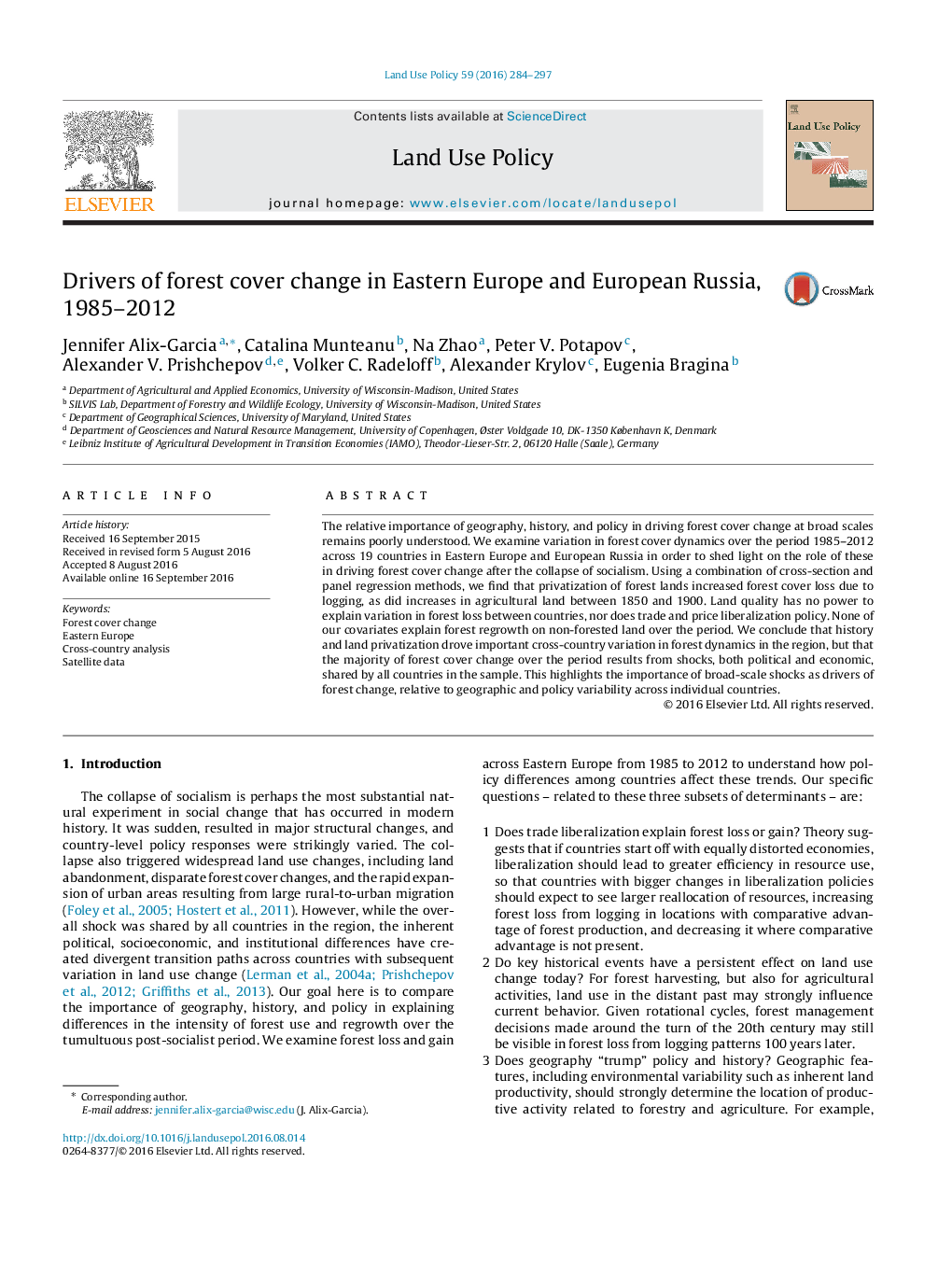| Article ID | Journal | Published Year | Pages | File Type |
|---|---|---|---|---|
| 6461534 | Land Use Policy | 2016 | 14 Pages |
â¢We examine forest cover change data from 1985 to 2012 across 19 countries in Eastern Europe.â¢Covariates of interest proxy for geography, historical forces, and policy changes in the wake of the economic transition.â¢We find that privatization of forest lands increased forest cover loss after 1990.â¢Increases in agricultural and crop land between 1850 and 1990 also increased current forest cover loss.â¢Land quality proxies have no power to explain cross-country variation in forest loss, nor does liberalization policy.
The relative importance of geography, history, and policy in driving forest cover change at broad scales remains poorly understood. We examine variation in forest cover dynamics over the period 1985-2012 across 19 countries in Eastern Europe and European Russia in order to shed light on the role of these in driving forest cover change after the collapse of socialism. Using a combination of cross-section and panel regression methods, we find that privatization of forest lands increased forest cover loss due to logging, as did increases in agricultural land between 1850 and 1900. Land quality has no power to explain variation in forest loss between countries, nor does trade and price liberalization policy. None of our covariates explain forest regrowth on non-forested land over the period. We conclude that history and land privatization drove important cross-country variation in forest dynamics in the region, but that the majority of forest cover change over the period results from shocks, both political and economic, shared by all countries in the sample. This highlights the importance of broad-scale shocks as drivers of forest change, relative to geographic and policy variability across individual countries.
